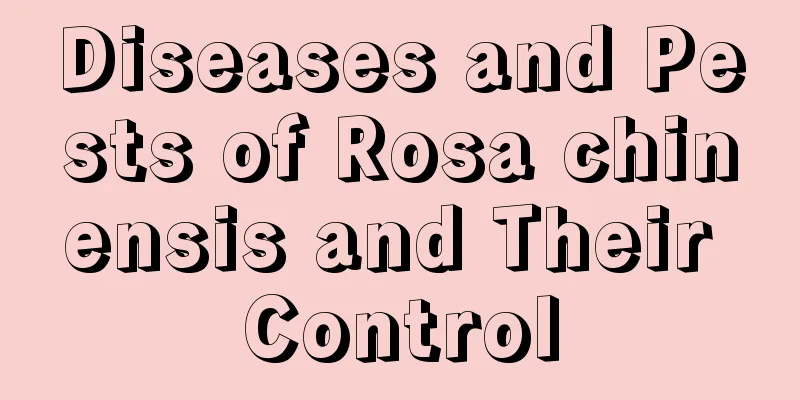Diseases and Pests of Rosa chinensis and Their Control

Diseases of Rosea rubrapowdery mildewWhen powdery mildew breaks out on Rosea thorna, the main symptom is a sparse white powdery mold layer on both sides of the leaves, twisted leaves, young leaves turning purple-brown and dying, and when the disease is serious, the branches die, affecting the growth and appearance of the plant. The disease usually occurs in the tender shoots, leaves, petioles, etc. at the top of the branches. The main method to prevent and control powdery mildew outbreaks on Rosa rugosa is to increase the application of phosphorus and potassium fertilizers and control nitrogen fertilizers. The second is to spray 800 times diluted 50% carbendazim wettable powder at the early stage of the disease, and spray 3-4 degrees Baume lime sulfur before germination. Other commonly used drugs include 1500 times diluted 20% triadimefon emulsifiable concentrate, applied once every 15-20 days, or 2500 times Heisha wettable powder, with the same interval as triadimefon. Fumigation cans can be used in greenhouses, using sulfur powder as the medicine. Leaf blightRosea rubra sometimes suffers from leaf blight, which manifests itself as spots on the leaves that change from yellow-brown to gray-brown, with obvious or unclear purple-red edges. In the later stages, small black spots appear on the leaves, and the spots may break through. The prevention and control method for Rosa rugosa skin color leaf blight is to spray 1000 times diluted 50% carbendazim wettable powder, or 200-300 times diluted 50% sulfur gel suspension, once every 10 days for 2-3 times in a row. Pests of Rosea rubraRose sawflyRose sawfly appears between May and June and causes damage until July and August. The larvae feed on leaves, and the adults lay eggs on young branches, piercing the branches and causing cracks in the twigs. When the yellow rose is infested by the rose sawfly, you can spray 223 emulsion with 250-400 times water to kill the larvae. You can also manually cut off the branches with insect eggs and burn them in a concentrated manner. Ligustrum mothYellow rose is also attacked by the moth, which occurs more frequently in June and July and often eats the young leaves. You can spray DDT or remove the overwintering cocoons manually. aphidAphids are relatively common and often harm the tender tips of young branches of Rosa rugosa. They can be controlled by sprinkling 0.5-1.0% 666 powder or spraying wettable 666. |
<<: Common diseases of Dendrobium officinale and their prevention and treatment methods
>>: Diseases and prevention methods of Cercis chinensis
Recommend
How to water Monstera? How long will it take for it to die if it is not watered?
1. How to water When breeding, it should be provi...
The difference between flat bamboo root and iris
1. Different varieties Although flat bamboo root ...
Can papaya seeds be planted?
1. Can it be planted? Of course papaya seeds can ...
How to choose carambola, carambola pictures
1. Look at the color When choosing, you can look ...
Can milk be used to water evergreen? The correct way to water evergreen with milk
Milk pouring on Dieffenbachia Milk cannot be used...
What trees can loquat trees be grafted onto?
1. What trees can be grafted 1. Original rootstoc...
Where is Amomum suitable for planting
Amomum villosum planting area Generally, Amomum v...
Golden grass cultivation methods and precautions
Golden grass is a symbol of longevity and is very...
Is yam a root or a stem? What does the root of yam look like?
1. Is it a root or a stem? Yams are underground s...
How to cut down old Yushu trees
1. Time Selection The time can be chosen in sprin...
Rice growth environment conditions and characteristics
Rice growth environment conditions and requiremen...
After the "orchid" blooms, take a pair of scissors and cut it, and the lush buds will grow faster!
Yes, from ancient times to the present, who can r...
Advantages and disadvantages of Abans roses
The Albans rose is a variety bred in the Netherla...
How to care for bougainvillea after its flowering period (management methods after bougainvillea has finished flowering)
How to care for bougainvillea during its off-flow...
Is it OK to repot Clivia without changing the soil?
1. Is it possible? When repotting Clivia, it is o...









